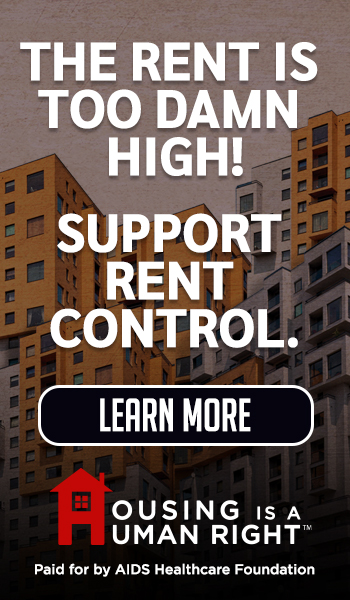Comments
iAUDIT! - One of the most common questions I’m asked is what it will it take for the general public to demand fundamental change in Los Angeles’ homelessness intervention system. Despite audits and reports about billions spent with no discernable gain; despite news stories of mismanagement; despite the evidence we see on street corners and underpasses all over the city, and despite stories from the unhoused themselves of neglect, lack of services, and outright abuse, there has been no strong, consistent, and organized demand for improvement. Demands for change have, for the most part, been restricted to op-ed pages on various news outlets, or through court cases, especially the Los Angeles Alliance for Human Rights’ suits against the City and County. [Disclaimer: I have done volunteer analysis work for the Alliance since 2023]. Some Neighborhood Councils have filed objections to specific projects or have asked for more information about programs and expenditures, but these have largely been ignored or deflected by the City. Why hasn’t the voice of many community members been heard, and how do we counteract the status quo?
There could be several reasons the public’s voice has not been heard. To begin with, there is no official channel for dissenting voices. Public discourse is largely controlled by advocacy groups and corporate nonprofits that benefit from the status quo, represented by the elected officials they support. For example, the Leadership Table for Regional Homeless Alignment (LTRHA) is the policy-making group for the use of new Measure A revenues. As I detailed in a column from last April, most of the LTRHA's membership consists of the same people who support the current failed system: corporate nonprofit executives, labor unions, and managers or employees of the same City, County, and LAHSA departments that have already wasted hundreds of millions of dollars. Dr. Va Lecia Adams Kellum, LAHSA’s former CEO, was briefly Mayor Bass’ chief homelessness advisor, and before that, she ran St. Joseph Center, one of the largest homelessness nonprofits in Los Angeles. The County’s choice to head its new homelessness department is a LAHSA alum and a current leader in county homelessness programs. There is simply no room for anyone who questions city or county policies. If the public doesn’t hear alternative voices, it gets its information from just one source.
One thing complicating reform is the difficulty understanding the relationships among agencies providing homelessness services. Oversimplifying a bit, the City is supposed to provide shelter and housing; the County should provide medical, mental health, and substance abuse support, and LASHSA provides funding, outreach, and service coordination. Rather than working together, these three agencies often provide overlapping and conflicting services. Some Councilmembers contract separately for outreach since LAHSA’s programs are insufficient. As federal judge David Carter recently said in ordering a monitor over the city’s service statistics, “The creation of LAHSA has, at times, enabled a cycle of blame-shifting. When data inconsistencies or compliance issues arise, the City points to LAHSA. In turn, LAHSA attributes its problems to a lack of information or cooperation from the City. This dynamic has fostered a system in which responsibility is routinely deflected, allowing both entities to evade accountability, with no single party willing to take responsibility”. Overlaying the relationship among local agencies is the overriding policy direction from the state and HUD, both of which insist on adhering to the one-size-fits-all Housing First solution.
Another reason there has been so little organized community outcry against current policies is that the crisis is simply too big to fully comprehend. Very little about the $4 billion homelessness system works as it should: outreach is repetitive and ineffective; shelters are mismanaged, and housing is too expensive and underserved. There are so many examples of poor management, the problems seem insurmountable. Where would one start to implement serious reforms? You can improve outreach, but that would just send more people into decrepit shelters. You can improve shelter management, but many people would enter a housing system plagued by exorbitant costs and a fatal lack of services. You could reform housing polices to require participation in sobriety or mental health programs, but where would that leave the thousands of unhoused people in desperate need of support services? Reform must be holistic, systemic and foundational to be effective, and that would be a huge multi-year undertaking. The issue’s complexity is beyond the ken of even the most attentive member of the public.
The next reason for the lack of reform is related to the previous one: because the homelessness crisis is so immense, many people tend to define it in terms of personal impact. This can lead to dissent that is just as fragmented as current policies. One person may define the crisis as the proliferation of RV’s in their community. Another may say it’s clearly an issue of untreated mental illness or substance abuse, based on the troubled people they encounter on sidewalks. Still others may use the generic reason of “corruption”, attributing mismanagement to greed and a conspiracy among civic leaders, nonprofits, and advocacy groups to perpetuate the crisis for monetary gain. Human nature tends to compartmentalize overwhelming issues to make them more manageable. Therefore, reform becomes a matter of clearing RV’s near my home, or of preventing encampments on my neighborhood’s sidewalks. On the more extreme end, some people propose sending the unhoused to large camps in the desert or jailing them as vagrants. Because the crisis is so large, and because people tend to reduce it to their personal experience, it is difficult to create a common platform for reform.
Under these conditions, and not to state it too crudely, it is easy for leaders to use misinformation to create a false perception of success. They can select the information they want to share, strip it of context, and present it as proof of success. Perhaps the best recent example is the 2025 PIT count. The count showed decreased overall and unsheltered homelessness. As in years past, the 2025 count was hampered by problematic software and missed areas, this time exacerbated by allegations of intentional undercounts for political reasons. Yet leaders claimed the count proved their programs worked. By removing context, they failed to mention the outrageous costs associated with single-digit decreases, (assuming they are real). When they brag about more people being sheltered, they fail to mention the horrid conditions in many shelters, or the atrocious job they do in moving people into permanent housing. When they say more people than ever have been housed, they omit the fact many fall back into homelessness within a few years. And they never admit that a significant portion of the numbers sheltered and housed are people cycling through the system multiple times. By cherry picking data and presenting it in the best possible light, leaders create a false image of success that makes it difficult to understand just how poorly homelessness programs perform.
Surveys show homelessness is at the top of many residents’ concerns, and it is clear most do not think enough is being done to meet the crisis. How can we help people grasp the magnitude of the problem and encourage them to press elected officials for effective solutions? There are many answers to that question, but perhaps one way is to break the crisis down into understandable information points an average person can comprehend and remember. A few examples:
- Between $2 billion and $4 billion per year is spent on homelessness in LA County. That comes out to $5.4 to $10.9 million per day, every day. Do you think we are getting our money’s worth for that?
- At least seven people die on L.A.’s streets every night.
- Fewer than two in ten people in shelters are placed in permanent housing.
- According to the LA City Controller’s dashboard, it costs about $433,000 per person to house someone through the Inside Safe program. Housing all of the city’s homeless would cost more than $19 billion.
- Although between 50 and 75 percent of the unhoused population suffer from untreated mental illness and/or substance abuse problems, if a homeless person is in a shelter, there’s a mere 25 percent chance you’ll receive mental health services. If you need substance abuse treatment, there’s a seven percent change you’ll get it.
- Many city policies do nothing to alleviate homelessness. The city’s CARE and CARE+ programs do little more than clean encampments, and allow dwellers to return, often on the same day. When the City Council allowed people to stay in RV’s overnight during the pandemic, it failed to include a sunset clause. This gave advocates an opportunity to define RV’s as homes, making it far more difficult for the city to move them. Instead of dealing with that reality head-on, the Council has chosen to nip at its fringes, approving small-scale measures that leave RV and encampment clearances to the prerogatives of individual Council members.
- Real reform must be systemic and holistic. Chipping away at minor improvements are not sufficient. We need leaders with entirely new perspectives who are willing to try entirely new solutions. Simplistic slogans like “only housing will solve homelessness” or “ship them all to the desert” won’t work. We need leaders who understand people become homeless for many reasons, so a variety of solutions is the only way to help them.
What people may find most empowering is that truly innovative solutions are coming from the community level rather than civic leadership. For example, the citizens group Santa Monica Coalition has created an AI-powered program to help re unite homeless people with their families. The program confirms a client has somewhere to go and then pays for a plane or bus ticket; it is so popular and works so well, there is already a 500-person waiting list. As expected, the program has faced opposition from entrenched special interests, who insist the Coalition oversimplifies the causes of homelessness. Yet none have offered effective alternative solutions.
Just as pro-reform advocates criticize leaders for defending a failed status quo, they must be open to individual-based solutions. There is no one-size-fits-all remedy to homelessness, and we cannot expect everyone who supports reform to agree on all issues. We must unite around common themes: recognizing current programs have failed and insisting leaders embrace new compassionate and practical solutions. Too many leaders and the special interests that support cynically count on a failure to coalesce calls for reform to continue to maintain the status quo. I believe the community deserves much better, and it can achieve true reform if it demands it.
(Tim Campbell is a longtime Westchester resident and veteran public servant who spent his career managing a municipal performance audit program. Drawing on decades of experience in government accountability, he brings a results-driven approach to civic oversight. In his iAUDIT! column for CityWatchLA, Campbell emphasizes outcomes over bureaucratic process, offering readers clear-eyed analyses of how local programs perform—and where they fall short. His work advocates for greater transparency, efficiency, and effectiveness in Los Angeles government.)















